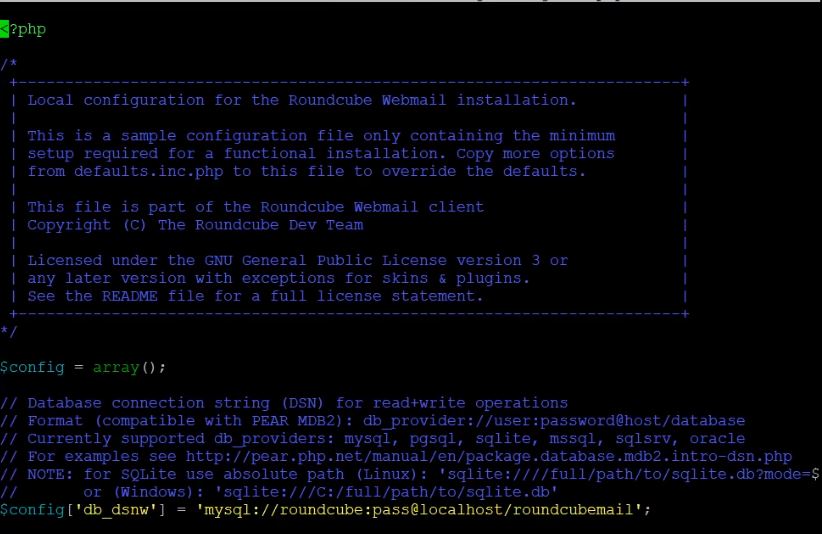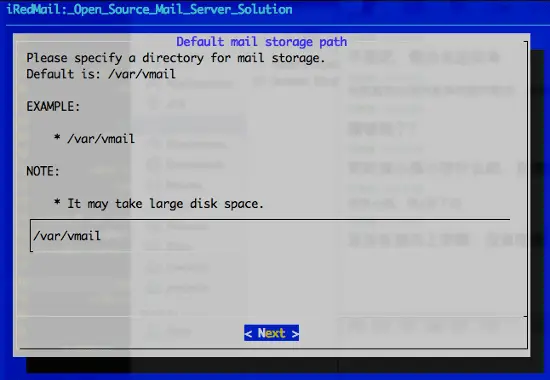Roundcube Webmail Installer
Install Local Mail Server (Mercury Mail server) Comes With XamppAnd PHP IMAP Mail Client (Roundcube)Linkshttps://roundcube.net/download/https://www.apachef.
How to Install RoundCube Webmail on Debian 9
In this tutorial, we will show you how to install RoundCube on a Debian 9. RoundCube is an open-source web-based IMAP email client written in PHP with an application-like user interface. It allows users to read, send, and organize their emails easily. One of the most prominent features of RoundCube webmail is the widespread use of Ajax technology and find-as-you-type address book integration. The RoundCube user interface is very customizable and it is available in over 80 languages.
If you have Roundcube webmail access, this app is for you. You do not have to use the browser on your maybe too small screen. Roundcube skins are usually not. Welcome to Roundcube Webmail 1.4.10. Username: Password: Login Roundcube Webmail 1.4.10 Welcome to Roundcube Webmail 1.4.10. Download Roundcube Webmail on Ubuntu 20.04. Log in to your Ubuntu server via SSH, then run the. The email client is written in PHP and supports the IMAP (Internet Message Access Protocol). Released in early 2008, Roundcube has gained a lot of popularity due to its extensive use of AJAX technology. In this guide, we will show you how to install Roundcube from cPanel via the Script Installer. A domain name e.g.
Prerequisites
- For the purposes of this tutorial, we will use a Debian 9 server.
- A working mail server with Postfix, SendMail or Exim, and Dovecot installed and configured.
- Apache, Nginx, LiteSpeed, Lighttpd, Hiawatha or Cherokee web server with PHP support.
- PHP 5.4 or higher (PHP 7 or higher is preferred) with the following PHP extensions enabled: DOM, JSON, XML, Mbstring, OpenSSL, PHP Data Objects (PDO) with driver for either MySQL, PostgreSQL, SQL Server or SQLite. Optionally, we can install Iconv, FileInfo, Zip and Pspell PHP extensions.
- Full SSH root access or a user with sudo privileges is also required.
Step 1: Connect via SSH
Connect to your server via SSH as the root user using the following command:
Remember to replace “IP_ADDRESS” and “PORT_NUMBER” with your actual server IP address and SSH port number. Replace “root” with your admin username if you’re not planning on using the root account.
Before starting with the installation, we need to update the OS packages to their latest versions.
We can do this by running the following commands:
Once the upgrade is complete, we can move on to the next step.

Step 2: Install Apache
We can install Apache2 from the Debian package repository.
Run the following commands to install Apache2 on the server:
Enable Apache2 to start on server boot:
Step 3: Install PHP and PHP Extensions Required by RoundCube
For RoundCube, we’ll be installing PHP version 7.0. With this command, we will install PHP 7.0 as well as download and install all of the required PHP extensions and pear packages:
Step 4: Create the Apache Configuration File
Create a new Apache configuration file for the domain/subdomain name that we will be using to access the RoundCube webmail application. For this tutorial, we will be using ‘webmail.domain.com‘.
Do not forget to replace webmail.domain.com with your actual domain/subdomain name. Save and close the file.
Create a new directory named roundcube:

To enable the newly created configuration file in Apache, run:

Disable the default Apache configuration file using:
Also, we need to enable Apache rewrite module if it is not already enabled:
Check if there are errors with the newly created Apache configuration:
Roundcube Webmail Help
If the syntax is OK and there are no errors, we can restart Apache web service.
Step 5: Create a MySQL Database

Create a new MySQL database:
(do not forget to replace ’roundcubeuser’ and ‘Str0nGPa55W0rd’ fields accordingly)
Step 6: Install RoundCube on Debian 9
There are two ways to install RoundCube webmail: using a .deb package from the official Debian package repository, or using source files from Github. For the purposes of this tutorial, we will download and install RoundCube from source. In order to get the latest stable version of RoundCube, we will download it from https://github.com/roundcube/roundcubemail .
To download the latest RoundCube version, run the following commands:
Run the command below to extract the RoundCube Webmail application files in the /var/www/ directory on your server:
We need to change the permissions of RoundCube files located in the/var/www/roundcube directory:
Apply the initial configuration to the RoundCube database using the following command:
Create a new cron job and enable Roundcube’s cache-cleaning script:
Roundcube Webmail Setup In Outlook
Open your favorite web browser and navigate to http://webmail.domain.com/installer/
If all the requirements are met, you should click on the ‘NEXT’ button. On the next page, enter roundcube as database name, roundcubeuser as database user name and enter your database password. Click the ‘CREATE CONFIG’ button, then click ‘CONTINUE’. Remove the entire installer directory from the document root of the web server:
Or, make sure that ‘enable_installer’ option in config.inc.php is disabled.
Roundcube Webmail Installer Test Config
That is it – the RoundCube installation is now complete.
Roundcube Webmail Installation Windows
Open your favorite web browser, navigate to http://webmail.domain.com and log in using your email account login credentials. There are many RoundCube plugins available to be installed, such as calendar, desktop notifications, vacation, custom-from, reCAPTCHA, login_control, smart_autocomplete, and so on.
